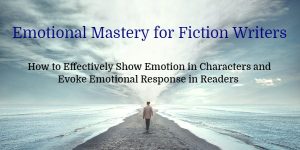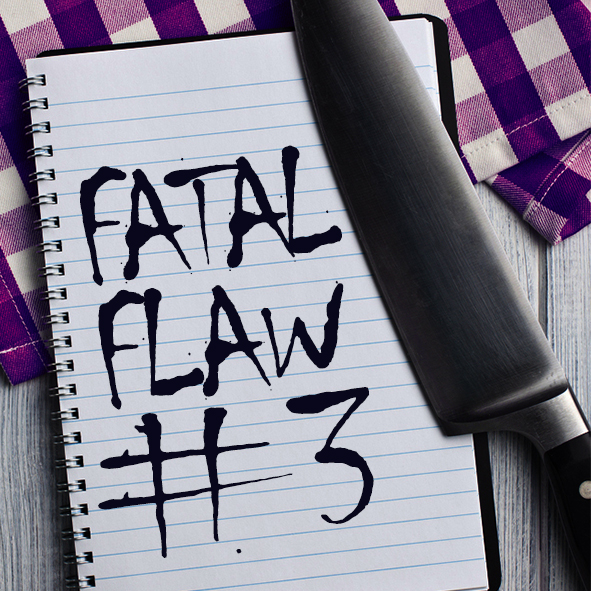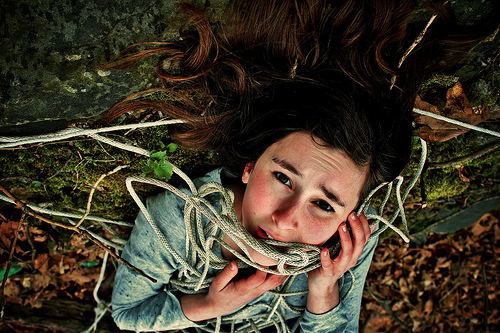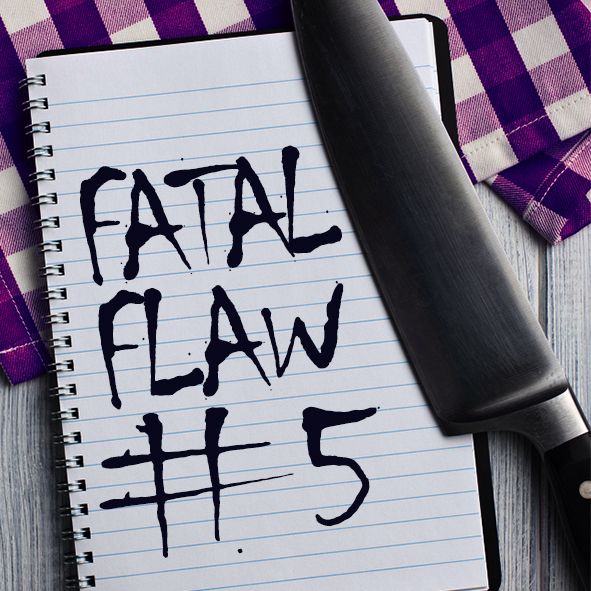Tension and Pacing Through Conflict and Emotional Narrative
This month we’ve been attacking Fatal Flaw #7—Lack of Pacing and Tension. Tension is crucial in a story. Without it, readers will stop reading. Pacing is linked to tension, and there are many ways to ensure strong pacing in a novel. Take a look at what editor Christy Distler suggests to create strong pacing and tension through conflict and emotional narrative.
This month we’ve been talking about tension and pacing in fiction. As a quick review, tension is what motivates your reader to keep turning the pages of the story. It grabs their attention and makes them want (or, even better, need) to know what’s going to happen next.
Pacing is the rate at which a story is told, and it can vary from slow to fast depending on several factors—for example: the characters, the setting, or the scene’s action (or lack of it). While pacing is always present and tension isn’t, both require good storytelling if they’re to work in a writer’s favor.
Two great ways of keeping up the tension and pacing are through the use of conflict and emotional narrative. Conflict, or a character’s opposition with other characters or circumstances (or both), keeps a story interesting. Emotional narrative invokes readers’ interest by allowing them to get to know a character and care about what happens to him or her. If a character’s inner thoughts and motivations aren’t shown, he or she seems more like a puppet just going through the motions.
Let’s take a look at Before and After examples to see how conflict and emotional narrative affect tension and pacing.
BEFORE:
Mrs. Gray glanced back at Daddy and me as she led us across the narrow paved road toward another more modern one-story building. Like the gymnasium, this one also had plenty of large windows, and I could see students moving around inside.
“This is the cafeteria. Students are free to eat their meals here, which is more common on bad-weather days and school days, or in other areas on campus, such as outside or in the residence halls.” She stopped at the glass double doors and opened one, then followed us inside.
The smell of food permeated the air, and I wrinkled my nose.
Mrs. Gray looked at me. “Is something wrong, Cassie?”
“Food smells and I just don’t get along, especially if the food is cooked.”
She cocked an eyebrow. “So you don’t eat cooked food then?”
“Well…I prefer raw foods—fruit, vegetables, nuts.”
Mother crossed her arms and sighed. “Perhaps there’s no better time than now for you to resolve your food aversions, Cassandra.”
“Maybe you’re right.”
Daddy placed his hand on my arm. “That would really work in your favor, honey.”
“If you’d prefer to supply Cassie with much of her food, that’s fine, and we have a good variety of fruits and vegetables available as well as yogurt and other uncooked foods.” Mrs. Gray smiled at me. “Perhaps we can sit down and come up with a plan that will help you be more comfortable with that aspect.”
“We’d appreciate that—to start anyway.” Mother shifted her gaze to me. “But sooner or later, you’re going to have to get over your food issues. Why not start now?”
Yeah. I could at least try.
AFTER:
Mrs. Gray glanced back at Daddy and me as she led us across the narrow paved road toward another more modern one-story building. Like the gymnasium, this one also had plenty of large windows, and I could see students moving around inside.
“This is the cafeteria. Students are free to eat their meals here, which is more common on bad-weather days and school days, or in other areas on campus, such as outside or in the residence halls.” She stopped at the glass double doors and opened one, then followed us inside.
The overbearing smell of food—ham and green beans among others—permeated the air. I raised my hand to my nose and held my breath.
Mrs. Gray cocked her head, her eyes widening. “Is something wrong, Cassie?”
Several students were seated at round tables throughout the large room while others stood in line getting their meals. I’d never understand how so many people could eat things without a second thought. “Food smells and I just don’t get along, especially if the food is cooked.”
She cocked an eyebrow. “So you don’t eat cooked food then?”
“I eat raw foods—fruit, vegetables, nuts.”
Mother crossed her arms and sighed. “Perhaps there’s no better time than now for you to resolve your food aversions, Cassandra.”
Seriously? Food odors killed my appetite, and I couldn’t remember the last time I’d eaten something green. She expected me to not only get used to new surroundings, but also be around and ingest foods that almost made me gag? Not likely.
Daddy placed his hand on my arm. “I’m sure we can work out your meals with the administration, just like we did at your old school.” He looked to Mrs. Gray. “Certainly you have other students with alternative eating habits?”
“Indeed we do,” she said. “Most have allergies, but we’re willing to work with families to ensure that students receive the nutrition they need. If you’d prefer to supply Cassie with much of her food, that’s fine, and we have a good variety of fruits and vegetables available as well as yogurt and other uncooked foods.” She smiled at me. “Perhaps we can sit down and come up with a plan that will help you be more comfortable with that aspect.”
Oh, I loved this woman.
“We’d appreciate that—to start anyway.” Mother shifted her gaze to me and lifted her chin. “But sooner or later, you’re going to have to get over your food issues. Why not start now?”
Why not start now? Maybe because food odors were gross and, moreover, that anything the color of tomato hornworms and stink bugs shouldn’t be anywhere near my mouth.
So what differences did you see in the two examples?
- While there’s some conflict in the Before passage, it’s not enough to keep the scene interesting. Sure, Cassie reveals that she doesn’t like certain types of foods, but when she’s questioned about that, she gives a rather neutral answer: she prefers certain foods. In the After, she tells it like it is: she flat-out doesn’t eat certain foods. Her mother then states that she should work on resolving her food aversions. In the Before passage, Cassie simply agrees, while in the After, she gives the reader an explanation of why she can’t. Her acquiescence continues at the end of the scene, when she again consents to her mother’s suggestion. The lack of conflict in the Before passage significantly weakens the scene, making it boring and even questionably necessary to the story—hardly a page-turner and kind of blah-blah with pacing. The After passage, on the other hand, has plenty of tension, which increases the pacing.
- Emotional narrative. In the Before example, Cassie describes very little of what’s going on in her mind during the scene. She listens and answers, but we don’t know the depths of what she’s truly feeling. One of the things that greatly influences whether readers bond with a character is their ability to identify with what the character is experiencing. The emotional aspect of Cassie’s struggle with certain foods is something most people can relate to, at least to some extent (who doesn’t have certain foods they don’t like or can’t stand?), and it also increases the tension and speeds up the pacing.
Your turn:
Have you ever struggled with including conflict and emotional narrative in your writing? If you’ve overcome such issues, how did you do it?
Want to master the emotional craft of fiction?
Dive into the online course Emotional Mastery for Fiction Writers!
In this course, you’ll be given tools to show emotions in your characters. You’ll be given techniques to help spark emotional response in your readers. What is going to bring it all together for you is practice. Study and practice. And you’ll have exercises in this course to help you put into practice what you learn.
There are two facets of emotion in fiction: conveying what your character is feeling and evoking emotion in your reader. We’ll look at these two facets separately and in de pth. Yet, they are intrinsically connected.
pth. Yet, they are intrinsically connected.
Emotional mastery requires writers to set up the dynamics of a scene in such a visual, textural way that readers can’t help but feel what they are meant to feel. Understanding that emotional mastery requires a twofold approach—the emotional landscape of both the character and the reader—is the first step.
Want to learn how to become a masterful wielder of emotion in your fiction? Enroll in my new online video course, Emotional Mastery for Fiction Writers.
You’ll get lifetime access to all the videos and more than three dozen downloadable assignments. And with a 30-day money-back guarantee, you have NOTHING to lose by jumping in. Sign up NOW.
This course will challenge you to become an “emotion master.” Are you ready and willing to go on this journey deep into emotional territory? If you want your characters to move your readers, take the plunge!












Creating an emotional narrative is my biggest struggle. On a first draft my focus is on getting the external details right. Now, before I write a second draft, I create a list of emotions for my POV character tied to each beat of the scene, then use the Emotion Thesaurus to find actions that relate the emotion and create an internal narrative that shows what the character is thinking/feeling at each point. I’m still much too heavy on the thinking, and too light on the feeling, but I’m working on it.
Your before and after examples always give me some tidbit to add to my arsenal to battle against my main weakness: flat, emotionally shallow writing. Thanks.
Thank you, Sara.
I write similarly, adding the bulk of the emotion after the action is already written. I love the Emotion Thesaurus!
I’m glad this post was helpful for you!
I loved this post. Your comment about emotional narrative really hit the spot for me. In what I read and write, I need to know how a character feels about the conflicts going on with others and the situation in his life generally. It can be done efficiently and without reliance upon “telling.” Thank you for this important reminder.
In my second novel project, I am having more of a struggle with pacing, but it’s only a rough draft, so I’m “letting it all hang out.” It feels like a risk, but it’s how I find the story. I’ll put it on Weight Watchers later.
What do you think? (If you have the time.)
Jim
Thank you, Jim!
I agree. Let it all hang out if that’s what you need to do to get it down on paper. You can always add the needed emotion afterward. Every writer has a different formula that works for him or her, so I say go for it!